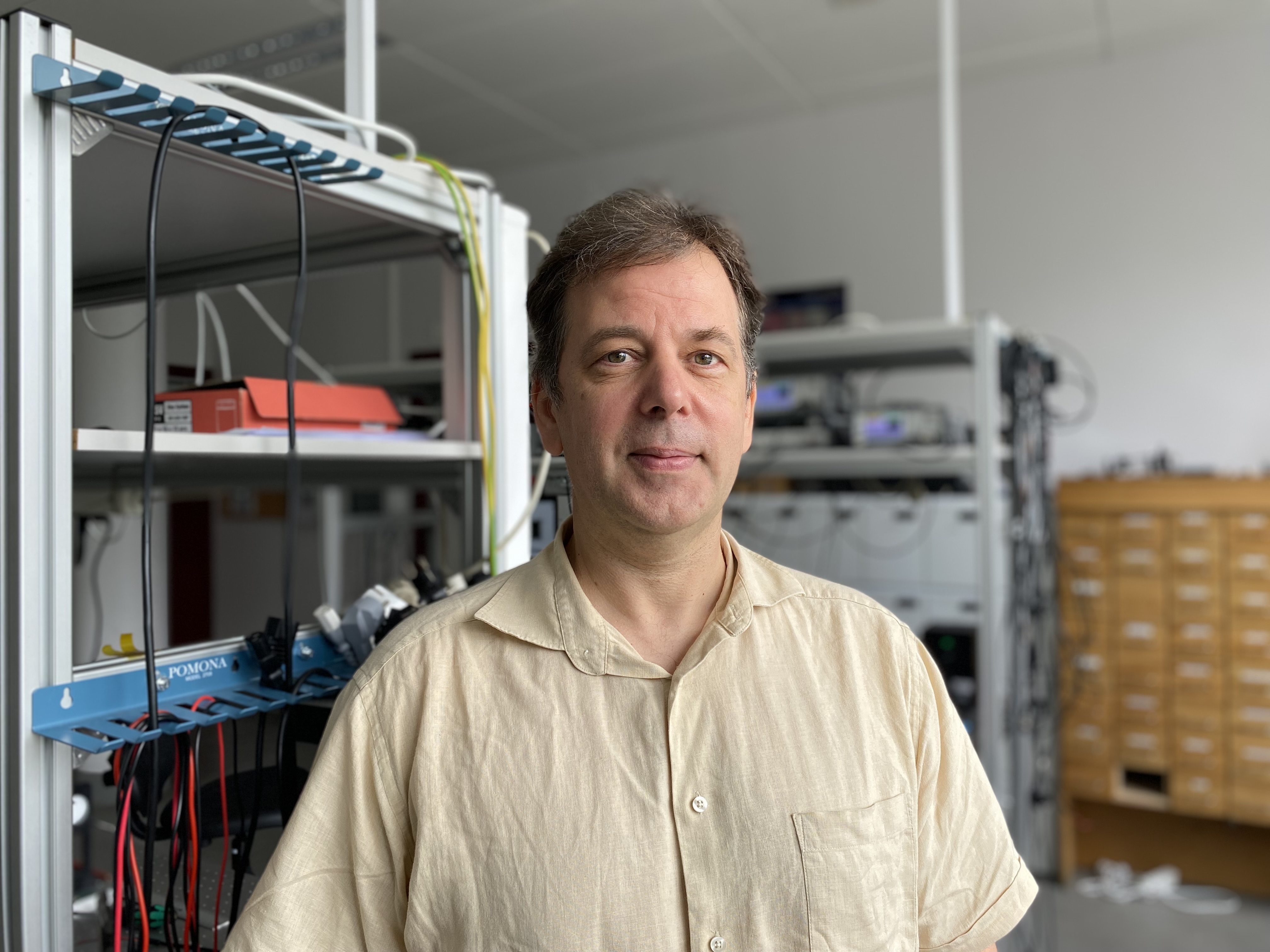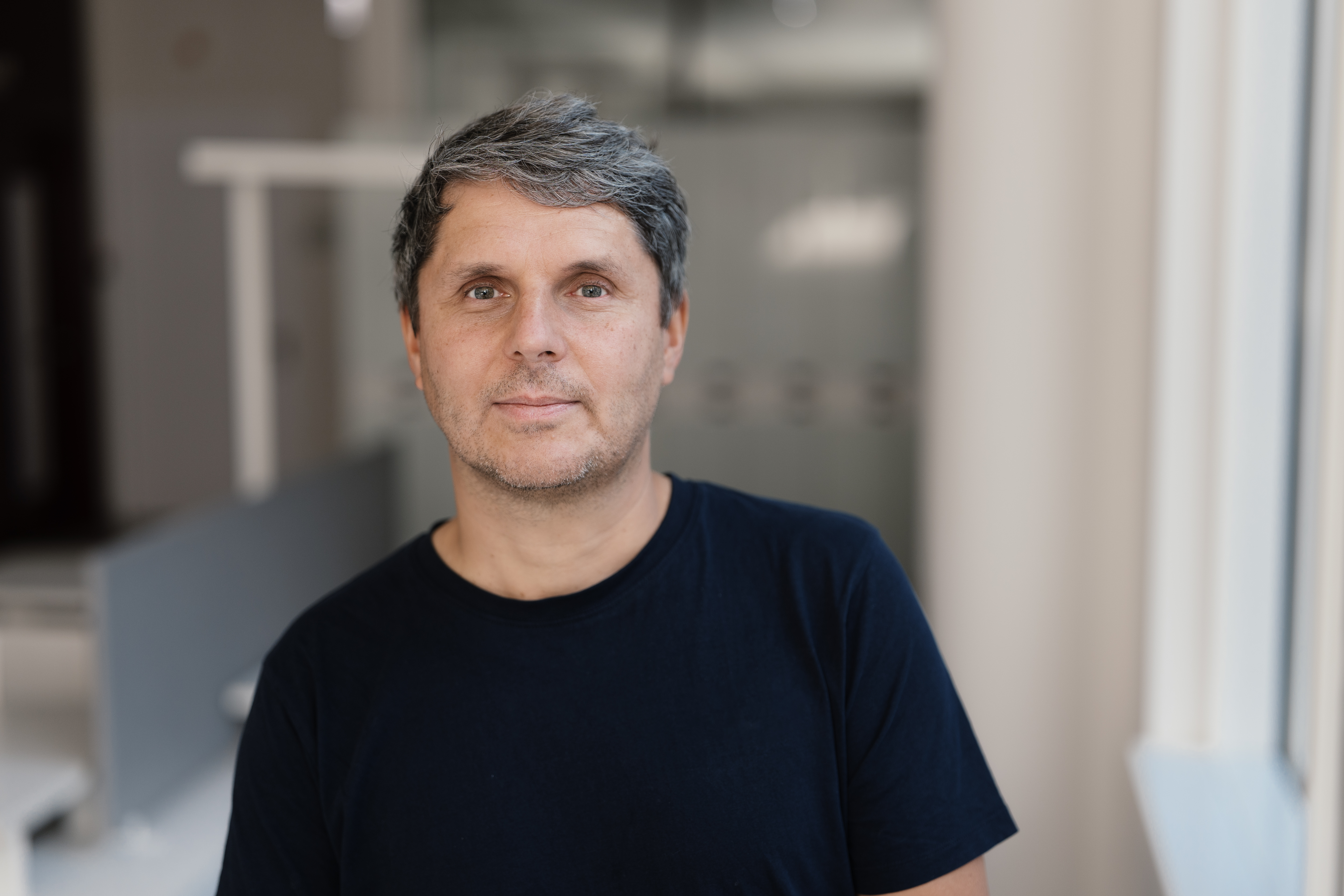VU Physicists Have Developed an Extremely Fast and Sensitive Biosensor That Could Help in the Diagnosis of Diseases
 Prof. Alvydas Lisauskas. Photo: VU Faculty of Physics.
Prof. Alvydas Lisauskas. Photo: VU Faculty of Physics.
How to examine a cell quickly and effectively? Scientists from the Faculty of Physics at Vilnius University (VU), together with an international team, have developed the concept of an electronic high-frequency biosensor that allows reactions occurring in extremely small objects, such as cells, to be tracked with split-second precision.
The COVID-19 test, familiar to most people, is a chemical biosensor that requires us to wait for the results. Scientists at the Institute of Applied Electrodynamics and Telecommunications have developed an electronic sensor that responds much faster. It is hoped that the new device will enable the monitoring of molecular changes in organelles and the detection of biological micro-objects. Based on the principle of terahertz spectroscopy, the invention could become an important tool in the diagnosis of diseases such as skin cancer and viral infections. The study was previously published in the international interdisciplinary journal “Scientific Reports” by the “Nature” group.
A single drop of the sample is enough for the test
“The concept of such a sensor opens up new possibilities in the field of biomolecular research, as it allows not only to detect the formation of certain biochemical substances or structures in complex biological interaction networks, but also to observe the processes live, without using chemical labeling,” says Prof. Alvydas Lisauskas, a researcher at the Noise and Terahertz Electronics Group of the VU Faculty of Physics.
Prof. A. Lisauskas, together with colleagues from the Institute of High-Pressure Physics in Poland and Goethe University Frankfurt in Germany, has developed electronic semiconductor devices that operate at high frequencies and are high-speed, sensitive, and have extensive tuning capabilities. The scientists achieved this by “generating waves” in the “sea of electrons” in the devices and combining semiconductor device technologies used in commercial chip factories.
“One drop is enough for such a sensor to determine, for example, the concentration of a substance. This is very convenient for biologists, chemists, and other researchers working with extremely small amounts of samples,” says Prof. A. Lisauskas.
Experience in detector development opens new perspectives
The biosensor operates based on terahertz spectroscopy. Terahertz waves are part of the electromagnetic spectrum between microwaves (radio waves emitted by mobile phones) and infrared light. This type of radiation does not damage the object being examined, making it well-suited for studying living cells. In recent years, terahertz technologies have received a lot of attention in medicine and biology due to their ability to monitor processes non-invasively.
“Personalised medicine is currently evolving rapidly, and its successful implementation requires more effective and economical analytical methods and devices. The terahertz sensor we have developed could become one of them,” says Dr Kęstutis Ikamas, physicist at the VU.
 Dr Kęstutis Ikamas. Photo: VU.
Dr Kęstutis Ikamas. Photo: VU.
Prof. A. Lisauskas adds that their research group chose a different perspective than others developing this type of biosensor. “The vast majority of scientists developing and improving similar biosensors focus on the use of metamaterials – artificially created structural materials whose electromagnetic properties arise not from the material itself, but from its micro- or nanostructure. We decided to leverage our extensive experience in developing electronic detectors using industrial semiconductor manufacturing technologies. These technologies allow us to combine individual structural elements typical for metamaterials with semiconductor devices that measure electric fields. This makes it possible to effectively register the electromagnetic interaction between the material under examination and the sensor, localised in the area of a single structure, while also ensuring the applicability of the solution for mass production,” explains the physicist.
Enables non-invasive analysis
According to researchers, the biosensor uses spectroscopy methods. This is an interdisciplinary branch of physics and chemistry that studies the interaction between material and electromagnetic radiation.
“Every material has its own unique spectrum. In visible light, people see the spectrum as colour. Tomatoes are red and cucumbers are green because these vegetables contain substances that reflect light of those specific colours. By measuring the light reflected from vegetables with precise instruments, scientists can accurately determine what substances are contained in the vegetables. Terahertz spectroscopy works on a similar principle, except that high-frequency radio waves are used for measurements instead of light. These waves allow us to identify molecules and analyse changes in organelles or tissues,” explains Dr K. Ikamas.
VU physicists say that the current planned applications of the biosensor include pharmaceutical production, medicine, including skin cancer detection and evaluation, virus and bacteria identification, and biomaterial sorting in microfluidics. Scientists from the University of Montpellier in France have already used a slightly different version of the same biosensor developed by Lithuanians, which enabled them to conduct unique research published in the journal “Science Advances”.